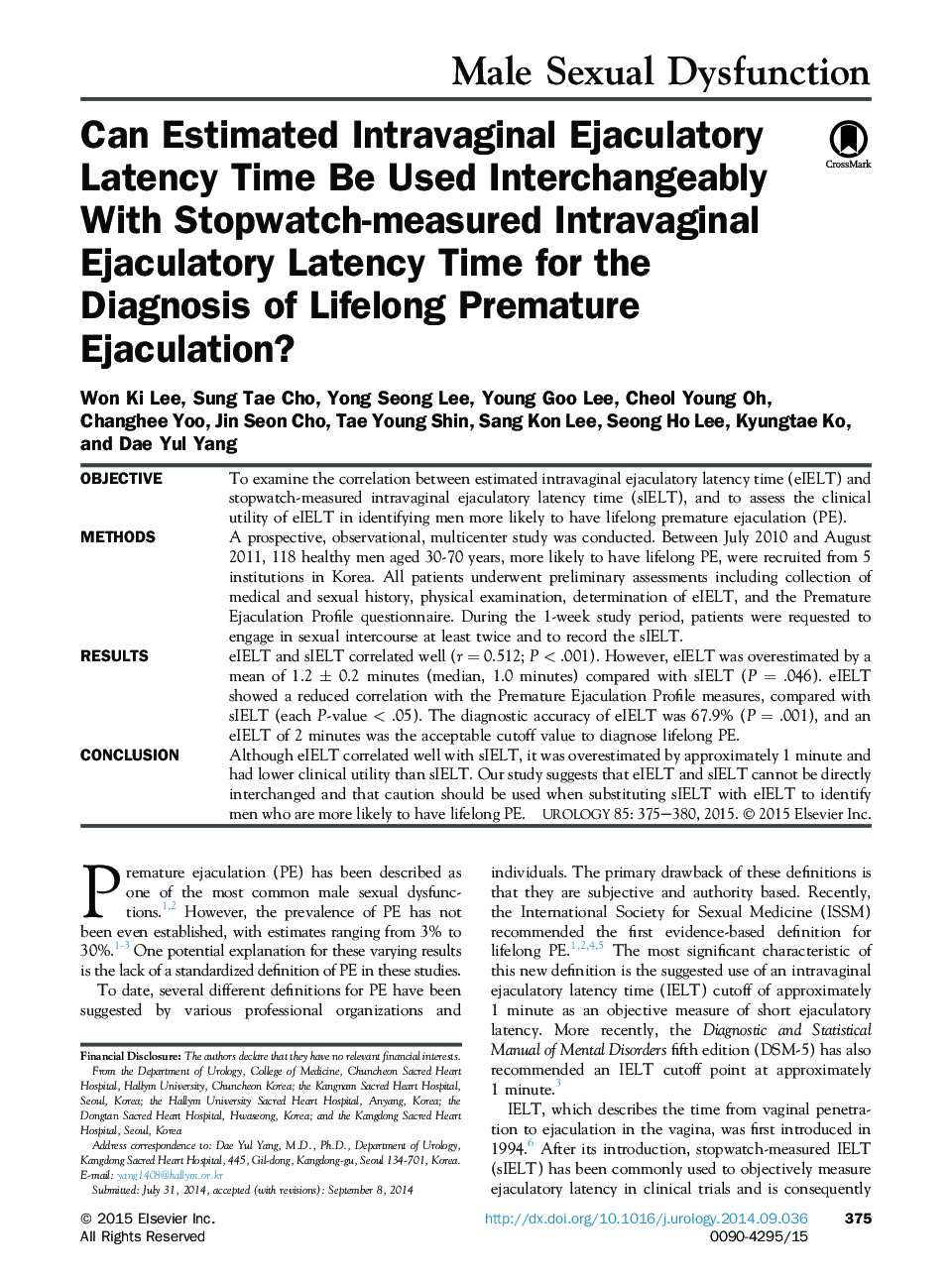| Article ID | Journal | Published Year | Pages | File Type |
|---|---|---|---|---|
| 3899318 | Urology | 2015 | 6 Pages |
ObjectiveTo examine the correlation between estimated intravaginal ejaculatory latency time (eIELT) and stopwatch-measured intravaginal ejaculatory latency time (sIELT), and to assess the clinical utility of eIELT in identifying men more likely to have lifelong premature ejaculation (PE).MethodsA prospective, observational, multicenter study was conducted. Between July 2010 and August 2011, 118 healthy men aged 30-70 years, more likely to have lifelong PE, were recruited from 5 institutions in Korea. All patients underwent preliminary assessments including collection of medical and sexual history, physical examination, determination of eIELT, and the Premature Ejaculation Profile questionnaire. During the 1-week study period, patients were requested to engage in sexual intercourse at least twice and to record the sIELT.ResultseIELT and sIELT correlated well (r = 0.512; P < .001). However, eIELT was overestimated by a mean of 1.2 ± 0.2 minutes (median, 1.0 minutes) compared with sIELT (P = .046). eIELT showed a reduced correlation with the Premature Ejaculation Profile measures, compared with sIELT (each P-value < .05). The diagnostic accuracy of eIELT was 67.9% (P = .001), and an eIELT of 2 minutes was the acceptable cutoff value to diagnose lifelong PE.ConclusionAlthough eIELT correlated well with sIELT, it was overestimated by approximately 1 minute and had lower clinical utility than sIELT. Our study suggests that eIELT and sIELT cannot be directly interchanged and that caution should be used when substituting sIELT with eIELT to identify men who are more likely to have lifelong PE.
